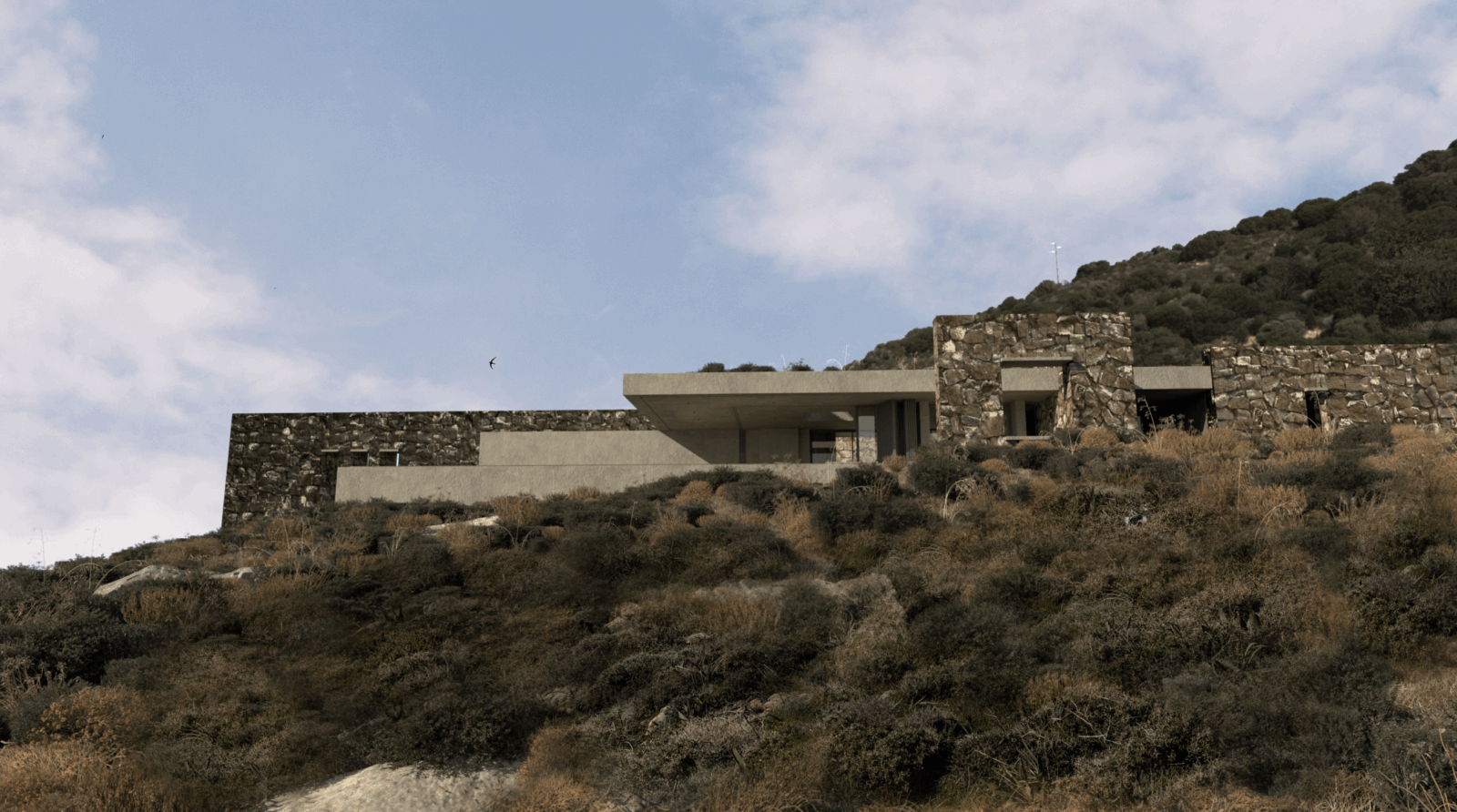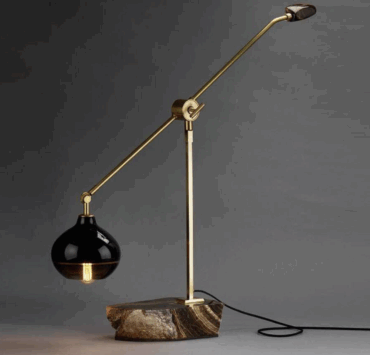A net-zero residence embedded in the cycladic terrain, blending architectural minimalism with regenerative design strategies
Athina, Greece, Aug 2025 – Located on a sloped site in Syros, Horizon House is a net-zero energy residence designed by ONUS Architecture Studio. Rooted in the Cycladic landscape, the project prioritizes energy autonomy, ecosystem restoration, and circular resource use. The semi-subterranean design minimizes visual impact while maximizing environmental performance, offering a case study in regenerative architecture for island environments.
Winner of the 2025 Architizer A+ Award for Best Sustainable Residential Project worldwide, Horizon House by ONUS Architecture Studio is a recognized example of regenerative architecture. Selected by an international jury, the residence was honored for its approach to off-grid energy, site-responsive design, and low-impact construction on an island terrain.
A reinforced connection to place
Located in Syros, Greece, Horizon House sits on a steep slope overlooking the Aegean Sea. The 230-square-meter residence is partially embedded in the earth, allowing the landscape to shape both the form and performance of the building. Stone excavated from the site is used for structural walls and cladding, reinforcing the house’s material connection to place. The design employs reclaimed wood, raw concrete, and native vegetation, resulting in a low-carbon, locally-grounded palette.
The house unfolds along a linear axis parallel to the horizon. Interior spaces face south, offering uninterrupted views, while maximizing passive solar gain. The more sheltered northern façade reduces exposure to prevailing winds and supports thermal comfort. An L-shaped pool defines the outdoor space and contributes to passive cooling, while visually linking the residence to the surrounding topography.
Bioclimatic strategies are central to the design. Deep-set openings, operable windows, and three skylights enable cross-ventilation and natural lighting, reducing the need for mechanical systems. During summer, thermal mass and air circulation maintain stable indoor temperatures.
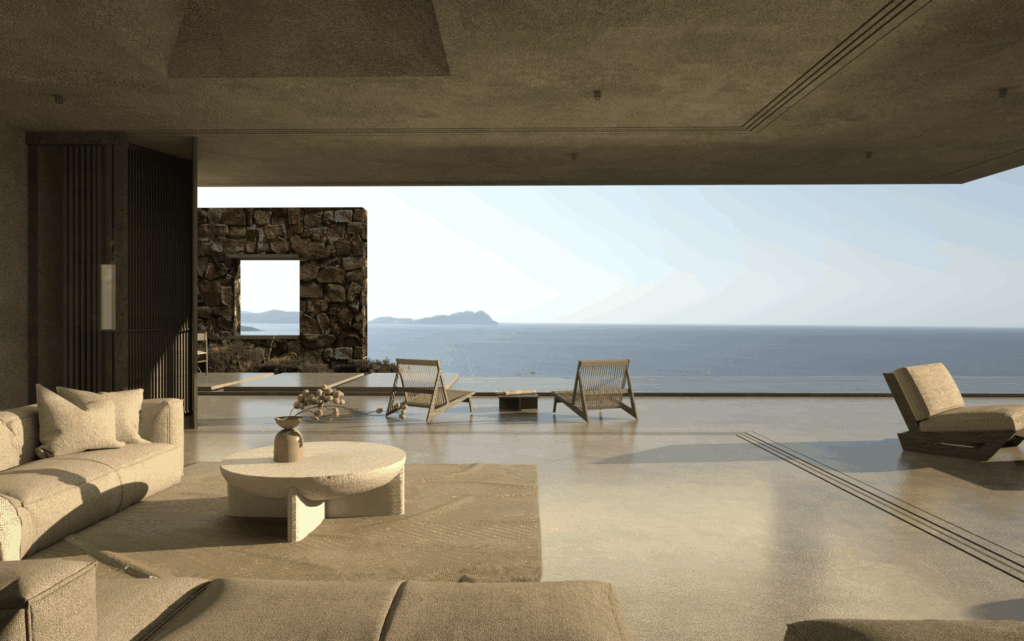
A fully energy-autonomous project
Micro wind turbines harness the island’s constant wind, while a geothermal system provides heating and cooling. The 300-square-meter green roof collects rainwater, which is filtered and stored through a blue roof system. Greywater is also treated and reused, minimizing waste and enabling off-grid operation.
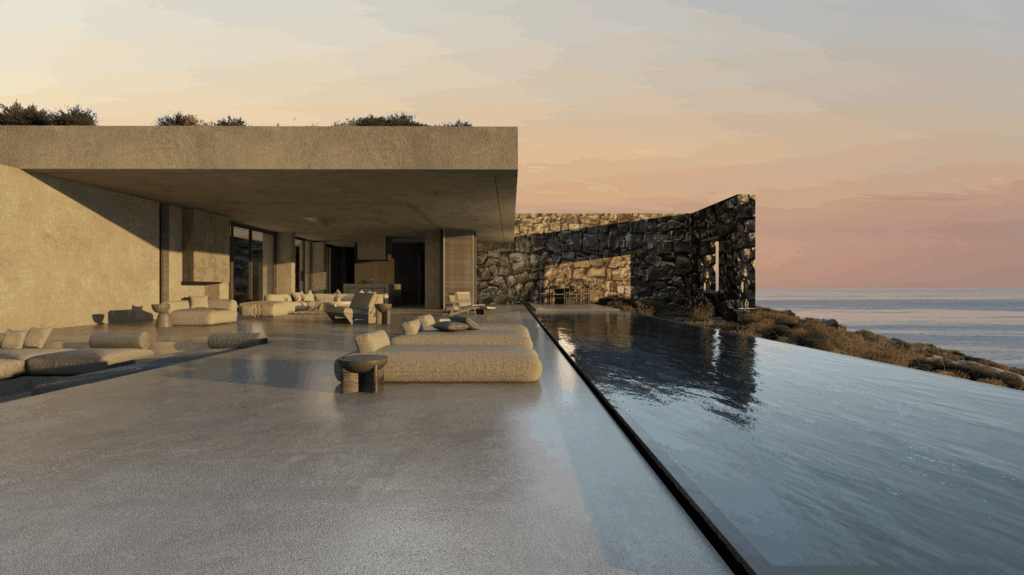
A landscape design supporting environmental regeneration
Native plants—adapted to the Cycladic ecosystem—were selected to enhance biodiversity, attract pollinators, and stabilize soil. Strategic placement of trees and shrubs provides shading and protection from wind, improving the microclimate around the building. These interventions contribute to long-term soil health and water retention, supporting a self-sustaining ecological balance.
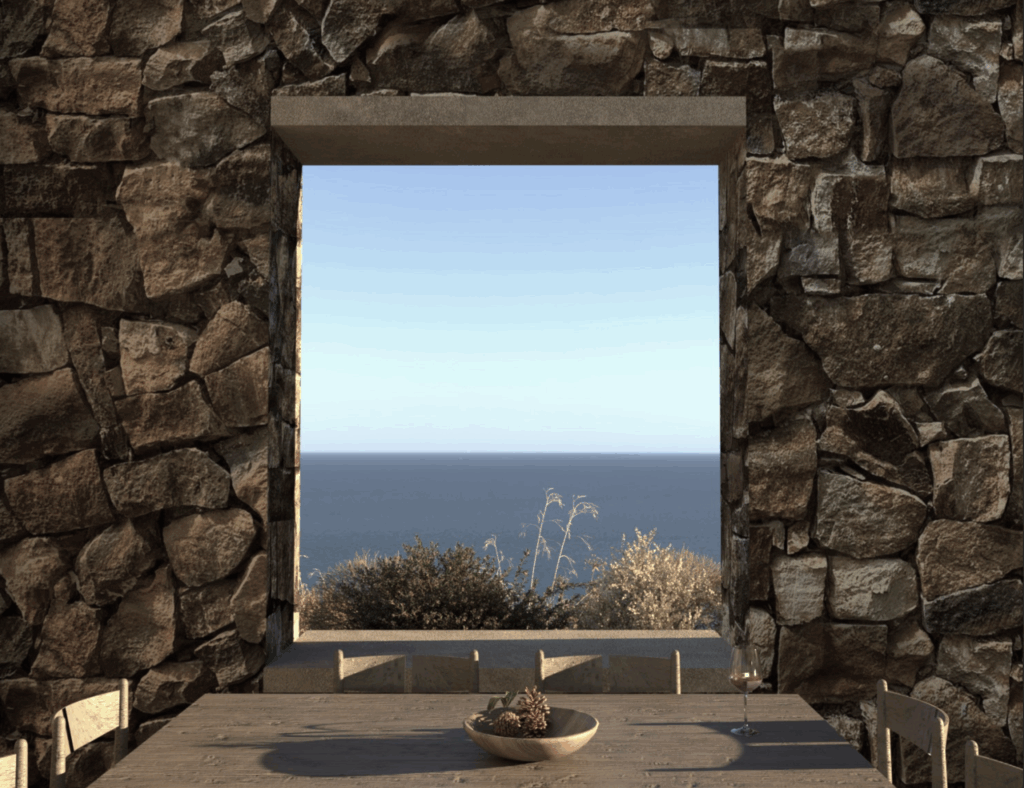
Simplicity and continuity
Inside, the spatial layout emphasizes simplicity and continuity. Living and sleeping areas are organized around natural light and views, with minimal finishes that allow the textures of the materials to define the atmosphere. Transitions between indoor and outdoor space are fluid, with courtyards, terraces, and shaded verandas extending the living experience outward.
Horizon House reflects an approach to regenerative design that prioritizes restoration over consumption. The residence is conceived not only as a shelter, but also as a system that supports environmental and human well-being. It demonstrates how architecture can become part of a broader ecological infrastructure—supporting natural processes while providing a refined and resilient living environment.
By integrating renewable energy, water reuse, local materials, and ecosystem-based strategies, Horizon House offers a model of sustainable living that adapts to place and climate. Its quiet presence in the landscape reflects a commitment to architecture that works with, rather than apart from, the land it inhabits.

